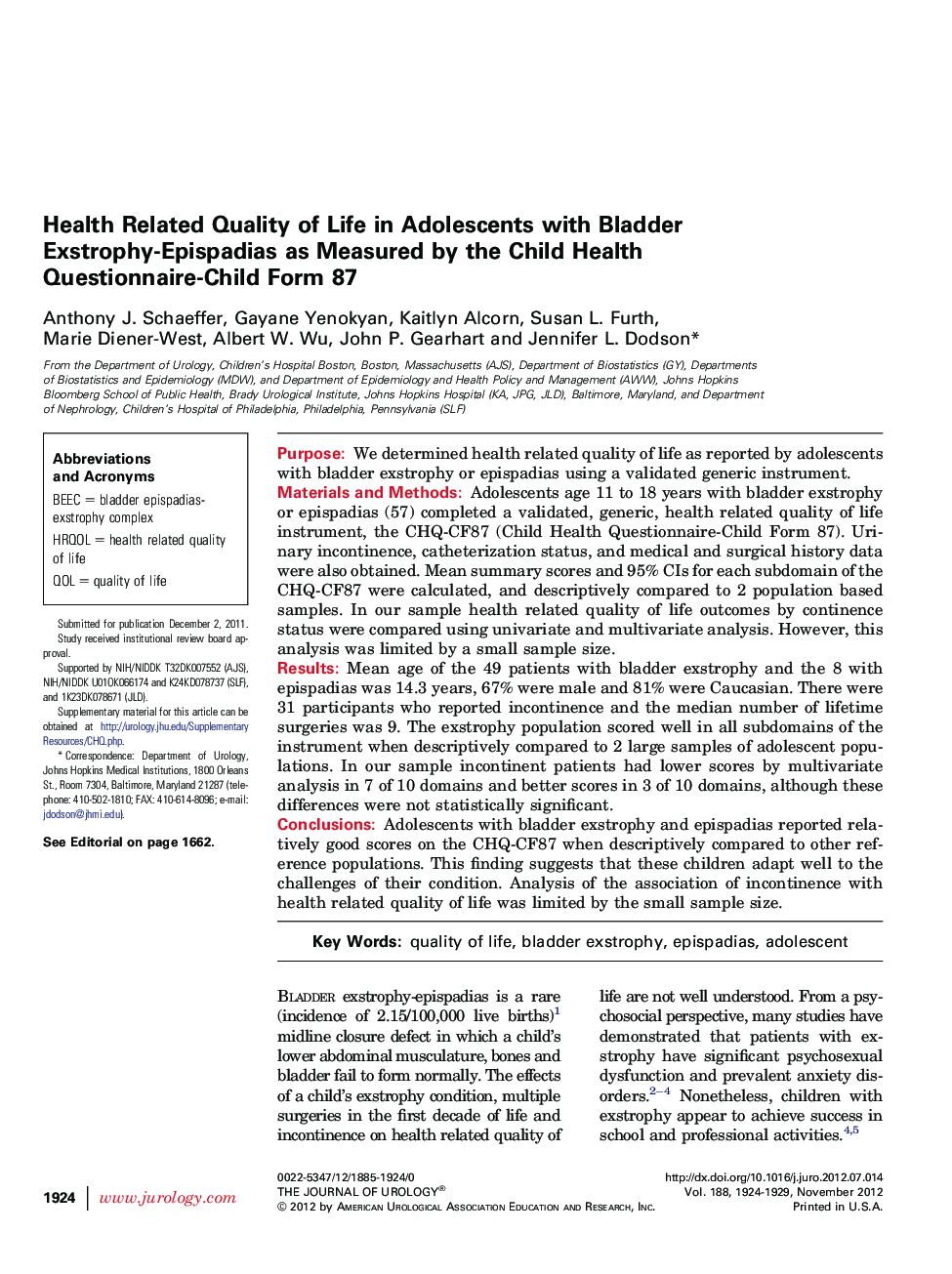| Article ID | Journal | Published Year | Pages | File Type |
|---|---|---|---|---|
| 3866121 | The Journal of Urology | 2012 | 6 Pages |
PurposeWe determined health related quality of life as reported by adolescents with bladder exstrophy or epispadias using a validated generic instrument.Materials and MethodsAdolescents age 11 to 18 years with bladder exstrophy or epispadias (57) completed a validated, generic, health related quality of life instrument, the CHQ-CF87 (Child Health Questionnaire-Child Form 87). Urinary incontinence, catheterization status, and medical and surgical history data were also obtained. Mean summary scores and 95% CIs for each subdomain of the CHQ-CF87 were calculated, and descriptively compared to 2 population based samples. In our sample health related quality of life outcomes by continence status were compared using univariate and multivariate analysis. However, this analysis was limited by a small sample size.ResultsMean age of the 49 patients with bladder exstrophy and the 8 with epispadias was 14.3 years, 67% were male and 81% were Caucasian. There were 31 participants who reported incontinence and the median number of lifetime surgeries was 9. The exstrophy population scored well in all subdomains of the instrument when descriptively compared to 2 large samples of adolescent populations. In our sample incontinent patients had lower scores by multivariate analysis in 7 of 10 domains and better scores in 3 of 10 domains, although these differences were not statistically significant.ConclusionsAdolescents with bladder exstrophy and epispadias reported relatively good scores on the CHQ-CF87 when descriptively compared to other reference populations. This finding suggests that these children adapt well to the challenges of their condition. Analysis of the association of incontinence with health related quality of life was limited by the small sample size.
